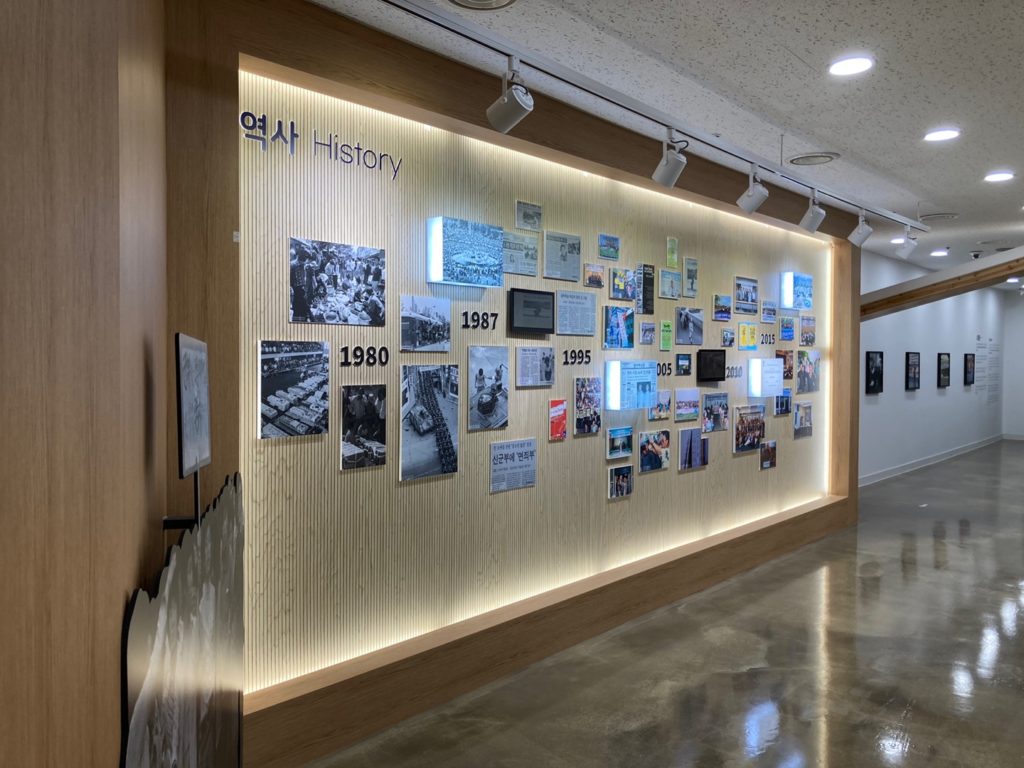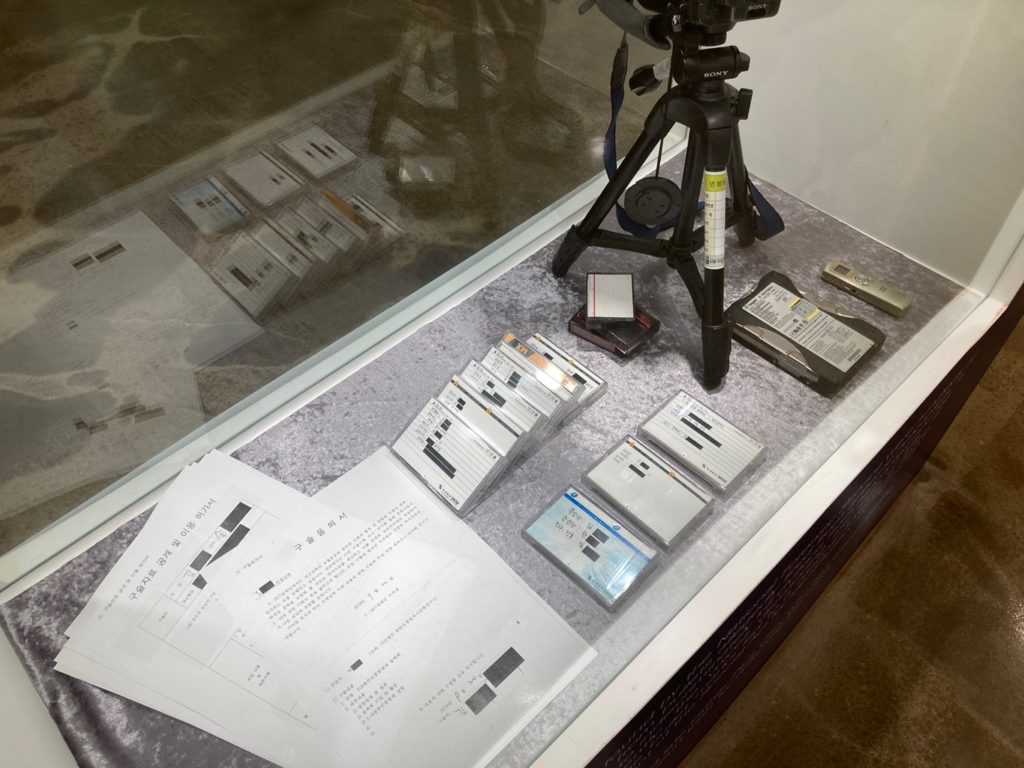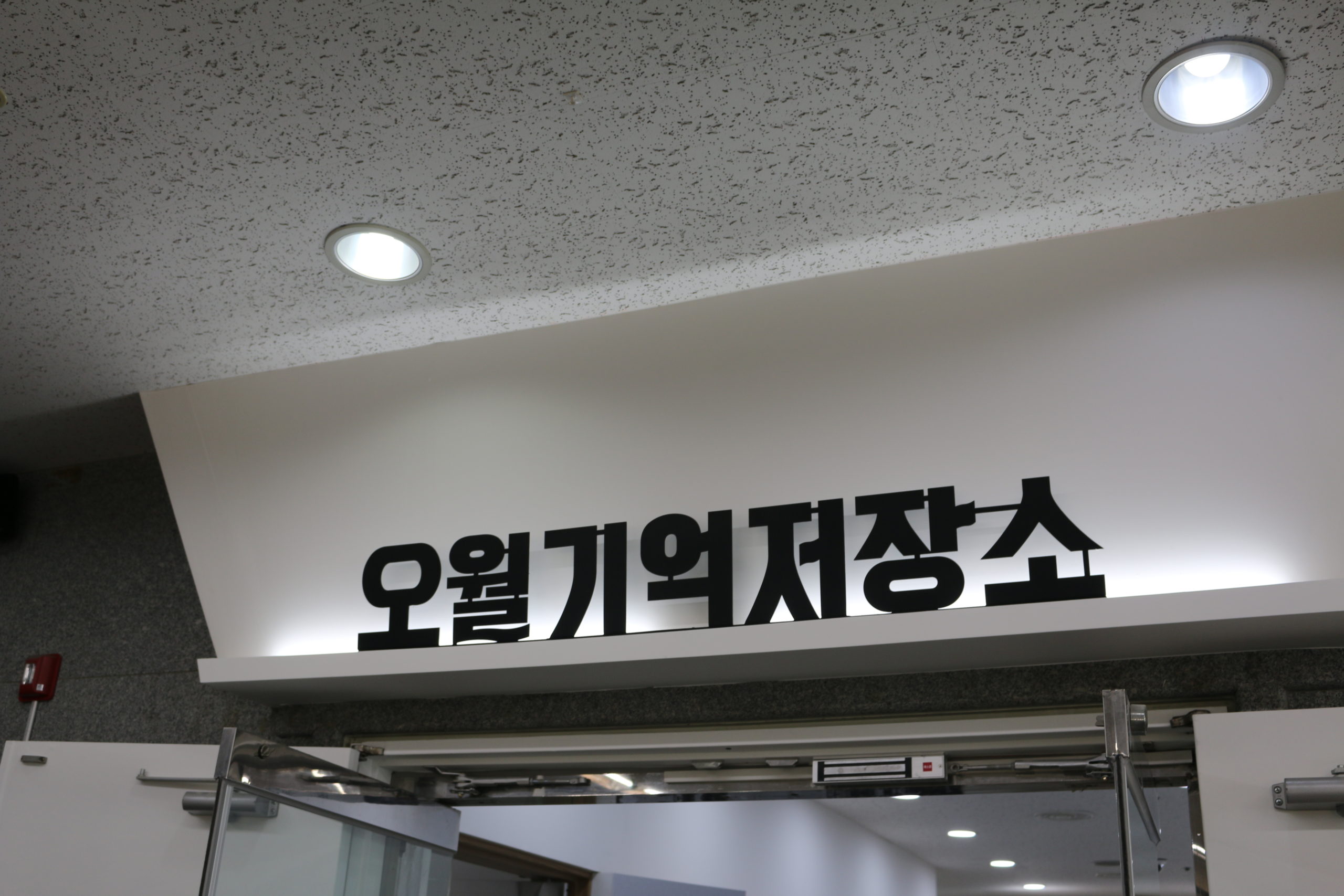May Is… – The May 18 Memorial Foundation Archive Exhibition
By The May 18 Memorial Foundation.
The May 18 Memorial Foundation has prepared an archive exhibition, “May Is…,” regarding the entire history of the May 18 Democratic Uprising as well as the Foundation.
“May Is…” is the first exhibition being held in the May Recollection Archive Hall after the Citizens’ Sarangbang (Community Center), located next to the May 18 Memorial Foundation’s office, has been remodeled into an exhibition hall.
The exhibition consists of eight sections in total: May, History, Truth, Memory, Records, Songs, May 18 in My Life, and Solidarity. You can view the data collected and donated by the May 18 Foundation, the May 18 Truth-Seeking Movement, and the current commemorative projects related to education, culture, solidarity, and academic research, which have all been used to spread the May 18 spirit since the establishment of the May 18 Memorial Foundation in 1994.

- May…
The month of May contains the city’s own history written along with the establishment of the May 18 Memorial Foundation in 1994, in collaboration with the May 18 Democratic Associations for Honorable Persons and Victims’ Families, the Association for the Injured People of the May 18 Democratic Movement, the May 18 Association for the Arrested and Injured, and citizens. On view in this exhibition are different photographs and documents prepared by these three organizations, in addition to those of the May 18 Memorial Foundation. Leaning towards each other, the triangular pillar at the entrance is the shape of the former 1980 structure and the current Jeonnam Provincial Office building. Displayed at the entrance are photographs from the 1980s; at the exit are photographs from the present. The conception and design of this exhibition progresses from how to remember to commemorating and passing on the memories of May 1980.
- History
The history of the May 18 Democratic Movement in 1980 has become the nationwide history of the Korean democratic movement. The brief history of May and the activities of the May 18 Memorial Foundation can be viewed at a glance through the exhibited photographs. - Truth
In 1980, Gwangju citizens fought back against the military dictatorship to reveal the violence of martial law. Gwangju citizens and the whole nation have fought together for May 18 against opposition forces denying the violence and distorting the truth. On display in this exhibition are pictures donated by Wi Jung-cheol from 1980 and the oral project carried out by the May 18 Memorial Foundation. The bullet marks in Jeonil Building, which were recreated on one side of the exhibition hall, take the viewer back to the time of May 18. - Memory
The records of the May 18 Democratic Movement were selected in 2011 as a UNESCO Memory of the World, which humanity should preserve and remember together. The testimony of Gwangju citizens at the time of the May 18 Democratic Uprising is on display here and will remain in memory. Also available for watching is the video Without Your Name, a special documentary produced by Gwangju MBC commemorating the 40th anniversary of May 18. - Records
On display in this section are photographs taken by German news photographer Jürgen Hinzpeter in May 1980 and articles describing the events of May 18 in chronological order. Also exhibited in this section are various articles related to the Foundation’s commemorative projects and other articles containing the May 18 fact-finding process since 1980, all provided by the The Hankyoreh newspaper. - Songs
Music encapsulating the spirit of May, including “March for the Beloved,” can be listened to in this section of the exhibition. - May 18 in My Life
This section features the documentary May 18 in My Life, which highlights the stories of people whose lives have been affected by the incidents that took place in May 18. The documentary, contributed by Gwangju MBC, can be viewed in separate kiosks. Regardless of status, all have lived together in May. - Solidarity
Koreans living in Germany, the United States, and Japan also fought with Gwangju to reveal the truth of May 18 as well as for the democratization in Korea. Through the archival materials and photographs that aid in remembering this time, one can see how solidarity for the movement spread to foreign countries.

Visitors to the exhibition can find the May Greetings Postcards at the May Recollection Archive Hall of the May 18 Memorial Foundation. The May Greetings Project welcomes everyone to send postcards under the theme “Sending May Salutations from Gwangju.” The postcards, which link May in Gwangju 40 years ago with the current Gwangju, can be placed into the “May Mailbox” and will be sent either within Korea or overseas free of charge. These postcards will serve to link the May in Gwangju from 40 years ago with today’s May in Gwangju. Please put your postcard into the May Mailbox, and the May 18 Memorial Foundation will forward it to anywhere in the world.
Photographs courtesy of The May 18 Memorial Foundation.
Exhibition Information
Address
152 Naebang-ro, Seo-gu, Gwangju 오월기억저장소
(inside the May 18 Memorial Foundation office, May 18 Memorial Cultural Center, 1st Floor)
Visiting Hours: Mon.–Fri., 9:30 a.m. – 5:30 p.m. (Closed Saturdays, Sundays, and public holidays)
Inquiries: 062-360-0543 / 062-360-0518
Website: www.518.org




